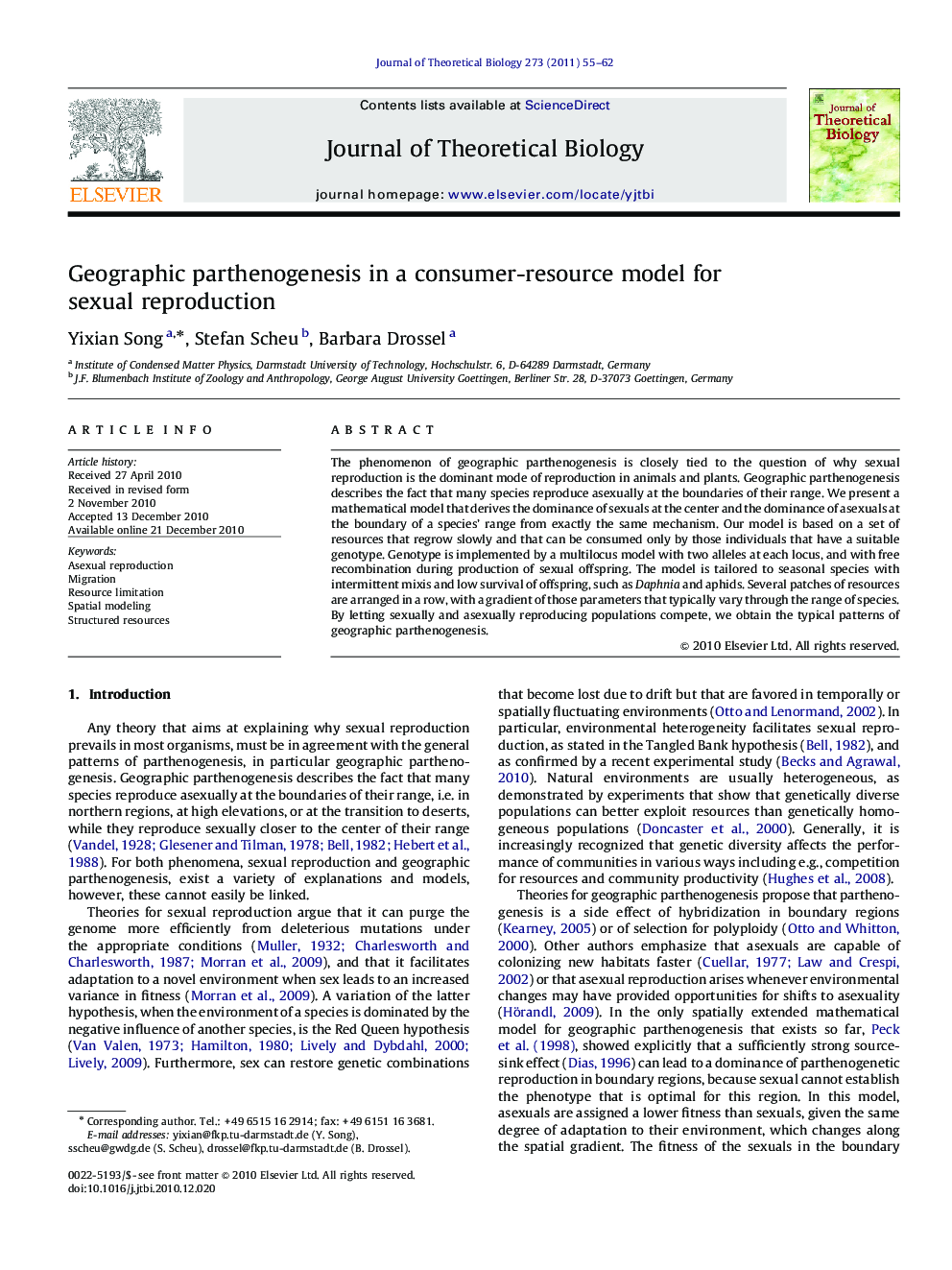| Article ID | Journal | Published Year | Pages | File Type |
|---|---|---|---|---|
| 4497230 | Journal of Theoretical Biology | 2011 | 8 Pages |
The phenomenon of geographic parthenogenesis is closely tied to the question of why sexual reproduction is the dominant mode of reproduction in animals and plants. Geographic parthenogenesis describes the fact that many species reproduce asexually at the boundaries of their range. We present a mathematical model that derives the dominance of sexuals at the center and the dominance of asexuals at the boundary of a species' range from exactly the same mechanism. Our model is based on a set of resources that regrow slowly and that can be consumed only by those individuals that have a suitable genotype. Genotype is implemented by a multilocus model with two alleles at each locus, and with free recombination during production of sexual offspring. The model is tailored to seasonal species with intermittent mixis and low survival of offspring, such as Daphnia and aphids. Several patches of resources are arranged in a row, with a gradient of those parameters that typically vary through the range of species. By letting sexually and asexually reproducing populations compete, we obtain the typical patterns of geographic parthenogenesis.
